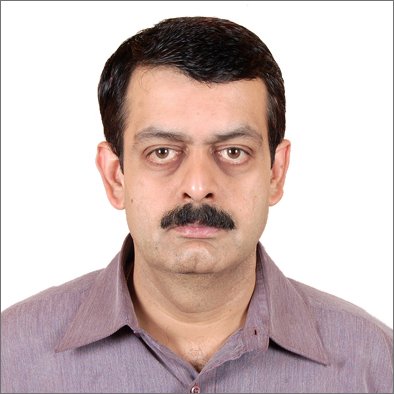Nuclear medicine a developing field in India
February 14, 2014 | Friday | Interviews | By Rahul Koul Koul
Nuclear medicine a developing field in India
Mr K N Sudhir, business head – Molecular Imaging, Siemens Healthcare, India,
With the evolving techology molecualr imaging to provide speedy, reliable and accurate results and will also help reduce cost associated with ineffective therapies. Keeping all these aspects in mind Mr KN Sudhir, business head - Molecular Imaging, Siemens Healthcare, India, puts some light on the molecular technological advances.
1. Tell us about Siemens' Biograph mCT Flow & Symbia Intevo?
Mr Sudhir: The Biograph mCT Flow PET•CT system with FlowMotion Siemens found a way to overcome the limitations of conventional PET/CT. So far, PET exams were done in sequential segments, called bed positions. With Biograph mCT Flow's FlowMotion technology, the patient bed moves continuously inside the gantry and allows anatomy-based planning.
That means each exam is planned based on that specific patient's anatomy, so physicians can plan their exams to get more information where it is really important for that patient.
The Symbia Intevo xSPECT system now, the world's first xSPECT system, with this physicians have the potential to not only image disease, but also leverage the high resolution to see the unseen and more confidently interpret images.
Moreover, Symbia Intevo's unique quantitative capabilities may provide the ability to monitor and adjust treatments earlier by accurately measuring even small differences. xSPECT hardware and software technology enables higher image contrast, and more precise lesion characterization provides physicians additional support in distinguishing between degenerative disease and cancer.
This facilitates physician decision making and potentially minimizes the need for costly CT, MR or biopsy follow-ups. To supplement this outstanding improvement in image quality. xSPECT reconstruction is also the world's first quantitative technology.
2. Can you briefly explain the R&D in nuclear medicine space vis-Ã vis-Siemens.
Collaboration between our customers and our research partners is thecornerstone for new developments. We are working closely with our customers as they are doing new procedures and research, to understand how we can better adapt our systems and our technologies to support their needs, as well as helping them understand what we can do.
3. How these products are going to be helpful to patients and what are their clinical uses?
Molecular imaging unmasks the biochemical processes that underlie disease before structural abnormalities appear, serving as a compass to guide physicians as they seek to find, characterize and follow disease, adjusting the course as needed to ensure their patients stay on the quickest path towards health.
The Biograph mCT Flow PET•CT system with FlowMotion technology
overcomes the limitations of stop-and-go imaging, providing one continuous scan that enables examination parameters, such as speed, image resolution and motion management, to be easily adjusted to the dimensions of individual organs.
The Symbia Intevo xSPECT system overcomes the challenges of conventional, mechanically fused SPECT/CT technology, by completely integrating SPECT and CT data during image reconstruction. The resulting accurate alignment facilitates extraction of medically relevant information from CT data for improved image resolution for bone imaging and quantitative measurements.
Now physicians can not only image disease, but also leverage the high resolution to see the unseen and more confidently interpret images.
4. How is the approach towards nuclear medicine in India as compared to
other countries?
Nuclear medicine is a developing field in India as compared to the western countries. We feel there are more milestones to cover. Most patients in India pay from their pockets to cover the healthcare expenses, so the cost of the procedure is a major concern here. This yet restricts some of the major clinical uses of this modality. For example, use of PET/CT for Alzheimer's detection and use of PET and SPECT for cardiac studies has yet to see its true potential in India.
Also awareness of this field is limited to metropolitan areas and tier 1 cities. Most of the smaller towns and cities in India still do not have this type of facility and, as a result, little awareness about the availability of molecular imaging and its value to the patient care continuum.










